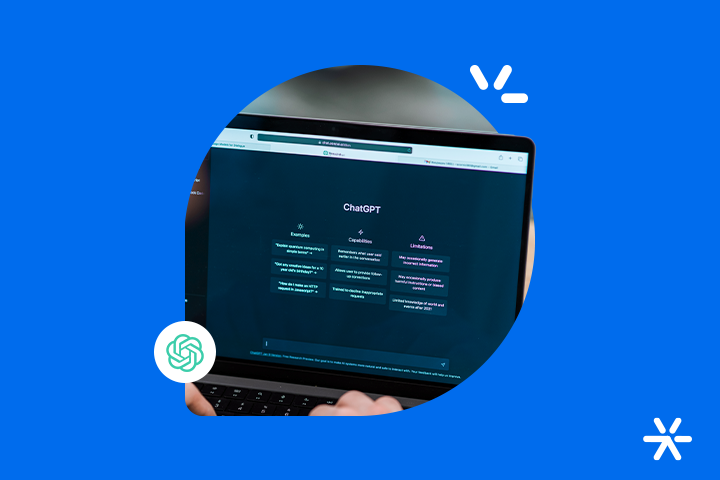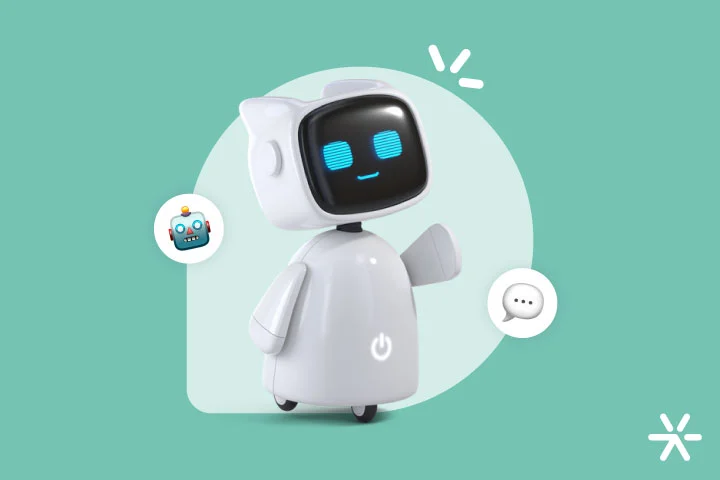What’s Natural Language Processing?
Natural Language Processing, or NLP, is the primary technology behind any application that utilizes Artificial Intelligence.
In fact, what we understand today as “Artificial Intelligence” is NLP itself. All the outcomes we extract from any AI application are based on Natural Language Processing.
Everything, absolutely everything, revolves around this processing. If it didn’t exist, generative AI as we know it today wouldn’t exist either.
And that’s important for us to discuss. When we understand NLP, we are understanding AI as a whole.
And when we don’t understand, we end up lacking a reference for what is possible with AI and what it will never deliver.
Today, we’re going to delve deeper into Natural Language Processing — we’ll look under the hood of AI and understand what it really is.
Shall we?
What is Natural Language Processing?
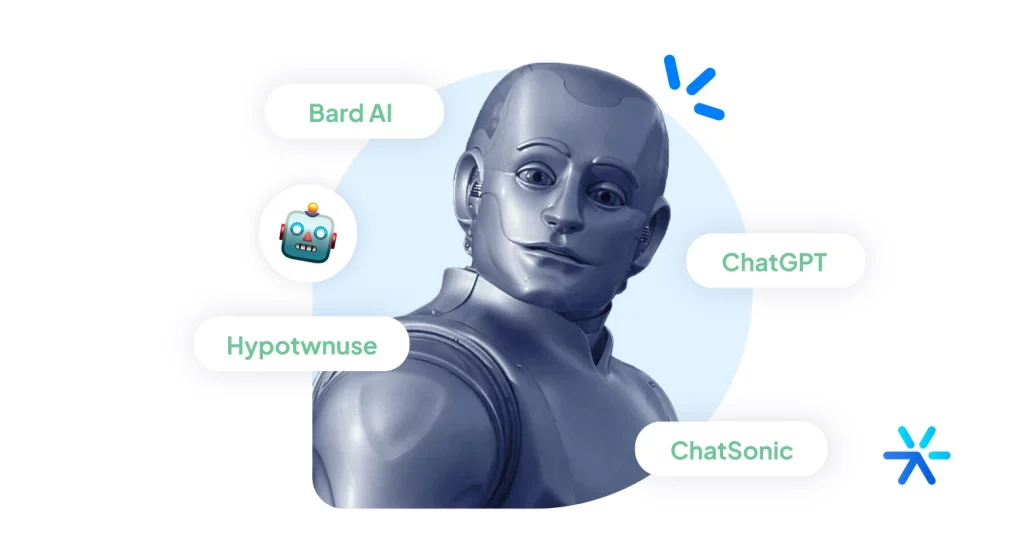
Natural Language Processing is a branch of Artificial Intelligence that primarily deals with understanding and producing language in a natural manner.
AI systems until now were controlled by real engineers. Importing and exporting data has always been operational tasks; it wasn’t possible to “talk to the machine.”
Nowadays, with Generative AI, talking to the machine doesn’t even need quotation marks anymore. We’re constantly engaging with it, thanks to NLP.
There are other types of AI besides generative, but every generative AI uses NLP both to understand what the user is requesting and to present a result.
Understanding what Natural Language Processing is isn’t very mysterious. But understanding how it works exactly is a bit more complicated.
Above all, we need to understand that Natural Language Processing primarily operates on machine learning.
This is the part related to NLP’s functioning, the part we don’t see but that is basic and fundamental to its operation.
And, besides machine learning, we also need to understand a bit more about stochastic methods, which are used during the AI’s response generation.
Let’s discuss these two points a bit better below.
What is Machine Learning?
Underneath the hood of any AI system, you’ll always find Machine Learning. It is the “I” in Artificial Intelligence.
Machine Learning consists of a series of systems and algorithms that enable a particular application to understand requests and store them in its memory.
With this, the application no longer needs inputs about a specific task every time it performs it.
For example: in NLP, applications have already understood the linguistic structures of the language they operate in and don’t need to be taught every time you ask for something.
Going beyond that, Machine Learning is also always seeking new sources of knowledge and automatically enhancing its databases.
There are millions of combinations to form a sentence, a text, anything related to language.
And even within these combinations, there are several others hidden, such as the user’s intention, their feelings, whether they’re being ironic or serious, telling a joke, etc.
Machine Learning, being a fundamental component of NLP, ensures that systems continue learning and understanding these differentiations, especially when millions of users are using AI simultaneously.
The deterministic model
The way AI used to deliver results before Natural Language Processing was the deterministic model.
This model is the simplest of all in any application. Something like “if the user says a certain keyword, this is the result you’ll deliver.”
And of course: if the user doesn’t provide any of the pre-configured keywords, there will be no result to show.
These more basic and deterministic AIs have existed for over 20 years. However, their limitations are quite obvious.
The main one is that there is no direct generation of language by AI. All results need to be previously written by humans.
But that’s the old model. In it, there is no Machine Learning whatsoever.
The model we’re seeing today is different. More about it now:
The stochastic model
Natural Language Processing, which empowers Artificial Intelligences today, is different. It uses the stochastic model to generate its responses.
The stochastic model is a probabilistic model. This is how we eliminate the rigidity of deterministic models, which are too precise to handle something as unexpected as a conversation.
This model works in a very simple way. If I ask the AI to create a good morning message, for example, it will start with the word “Good,” because that’s the word that has the highest probability of starting a message like that.
Next, the Artificial Intelligence will try to understand which word has the highest probability of coming next, considering the previous word and the context of the prompt.
You must be imagining that the most probable word here is “Morning.” If the prompt asked for a good night message, the next word would be “Night.”
The stochastic model is the same one we use in the autocomplete of our own phones, for example. However, it doesn’t come with that extra dimension of prompt analysis and Machine Learning.
It’s this extra dimension that comprises the main functionalities of Generative AIs. Without the stochastic model, ChatGPT wouldn’t exist.
The problem is that this model isn’t perfect. Similar prompts will result in similar yet different outcomes.
And this similarity, over time, ends up generating generic responses that are easy to identify as AI.
We have a text that discusses this and other topics about what’s good and bad in generative AIs. Follow along below:
➡️ The Positive Aspects of Artificial Intelligence. And the other ones.
Where is NLP used? + Examples of products
Well, now that we’ve taken a good look under the hood of AI and NLP, we need to understand mainly where it is used.
It’s important to note here that Natural Language Processing isn’t only used in text-generating tools, such as ChatGPT and Perplexity.
In fact, NLP has another equally important function: prompt generation.
One of the most interesting aspects of Artificial Intelligence is the possibility of you being able to converse with it, and it responding to you.
This has always been impossible until the emergence of Generative AI. There has never been in human history a system capable of understanding what you want and delivering what you requested with such accuracy.
It’s because of this characteristic that we can use AI today.
It’s pointless, for example, to have an AI capable of producing images but that doesn’t understand what you want.
Results focused on language — remembering here that images and videos are also language — arise from requests made by language: this is the biggest motto of contemporary Artificial Intelligence.
I needed to mention this because I’ve put together this list with some examples of where NLP is used, and you’ll notice that in some cases, the results won’t come with any type of text.
With that out of the way, let’s together explore some use cases of NLP in real applications?
Text creation
This is by far the most classic example: Generative AI, along with NLP, is capable of producing very understandable texts in just a few seconds.
This is where the stochastic method shines, and shines a lot. Through it, AI can deliver not only good results but results that seem to have been written by humans.
Alongside images and videos, text creation with Natural Language Processing is what we understand today as Artificial Intelligence.
The main tools in the market today for text creation are ChatGPT and Perplexity.
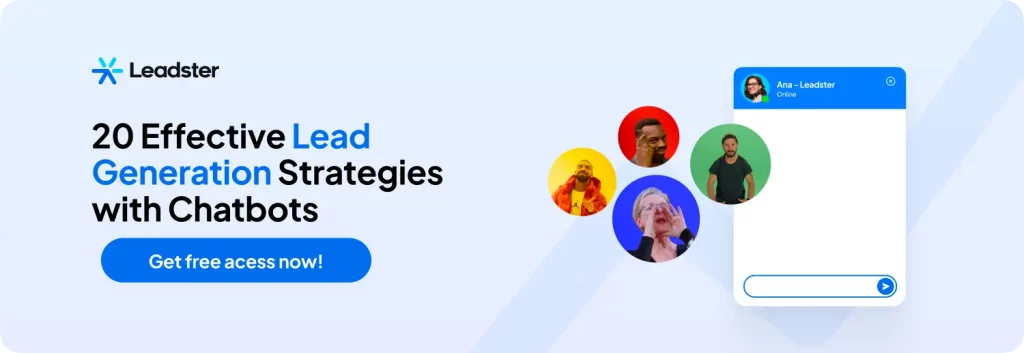
Image creation
Here’s the case we were discussing at the beginning of the topic: creating images with AI through Natural Language Processing.
The functioning is basically the same as text creation. The AI understands the user’s intention and generates an image according to what the user asks for.
In some more advanced cases, you can even ask for a more specific image, such as a red car on a green field.
The results of image generation today are much more advanced than they were a few years ago. Today, AI can deliver high-resolution images and with great realism.
The main tools in the market today for image generation are DALL-E and ImageGPT.
But we have a text that delves deeper and brings several other examples for various situations and specific uses. Follow along below:
➡️ 18 image creating AI tools with results and examples!
Voiceover AI
There are also applications focused on creating voices using Artificial Intelligence.
For people working in marketing agencies, this technology is a game-changer.
Firstly, for economic reasons: voiceovers and subbing are not cheap, and although AI is still very limited, it comes in handy for simpler campaigns with a limited budget.
Before, without the budget for narration, you just didn’t get one, end of story. Now it is possible, even with limitations.
Another interesting point for marketing agencies is the possibility of creating placeholder narrations, which demonstrate the need to have a voice in the campaign but will not be the final voice.
This is interesting for pitching a new campaign, which no longer needs to come with that classic disclaimer at the beginning of the meeting — “now imagine that this text is a narration.”
Today, the most popular tool in the market for creating voices through Natural Language Processing is Murf. It’s worth checking out!
Video creation
The creation of videos with AI also uses Natural Language Processing. It is only through it that you can describe to the AI what work needs to be done.
Moreover, without NLP, the creation and editing of these videos would not change. We would need to continue using the tools we have today to create them.
There hasn’t been much development in this area yet. At the time this text was written, the only AI good enough to generate original videos had just been released: it’s Sora, from OpenAI.
Answers for customer service chatbots
There are customer service chatbots that work entirely with NLP to answer users’ questions.
This is the case with Zendesk, for example. You can configure semi-autonomous chatbots that use Machine Learning in conjunction with your company’s database to offer the best possible answers within the context.
These AIs learn from the customers’ tone of voice and get better over time, being able to understand the requester’s mood based on the tone of the request.
There are different types of NLP-based AIs for customer service. But the two main ones are:
- Full service: the AI is approached by the client and seeks to answer any questions they may have. When it cannot, the case is transferred to a human agent;
- Assistance in service: the AI does not converse with the client but with the agent. It classifies the requester’s intentions, understands their urgency level, and offers resources to speed up and facilitate the agent’s work.
And of course: there are also more basic customer service chatbots that work through flows and do not use NLP.
We have a text that talks a lot about customer service chatbots with AI. Access it right below:
➡️ Artificial Intelligence Chatbot: The 8 Best on the Market
Navigation in large databases
This is one of the most strategic uses of NLP, but it is still being developed, and we do not know when it will be as widespread as the others.
Think about the information repository of a large multinational that has been operating for over 50 years. There are manuals and processes for everything!
But how do you find exactly the process you are looking for? In many cases, it is necessary to search through all the documentation, something that can take a long time.
Natural Language Processing brings resources to deal with this. With an assistant, you can simply ask and get an immediate answer.
These tools are not yet widely available on the market. For now, they are being implemented in a proprietary manner by large companies.
Insights in Business Intelligence systems
A very similar use is the AI assistant for Business Intelligence (BI) systems.
These Business Intelligence systems are focused on analyzing and presenting data related to your company and market.
However, the results they bring still need to be interpreted, a task that can be quite difficult for non-experts.
AI assistants in these BI platforms can facilitate this process, offering interpretations and insights using Natural Language Processing.
Today, Akkio is the only platform that works with this AI-first approach. But surely, even in 2024, we will see several others doing the same.
What are the main tasks of NLP?
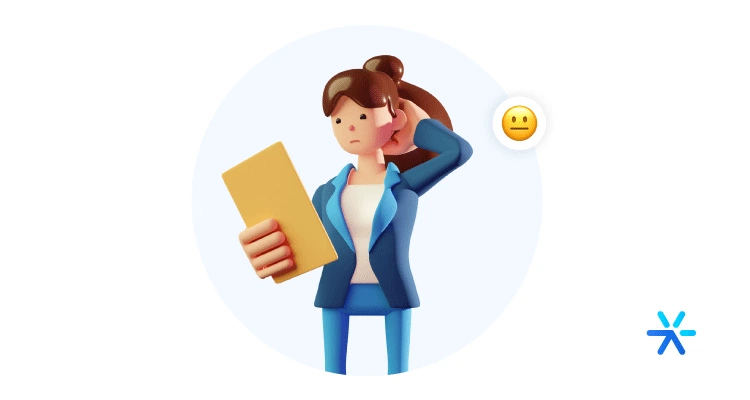
Well, we’ve talked about the more abstract and practical part of Natural Language Processing.
I hope everything has made sense to you so far. If it wasn’t clear, leave a comment, and I’ll respond. It’s very important to know more about NLP nowadays because AI is taking over the world — and quite quickly.
But to fully understand everything that involves NLP, we also need to understand its main operating pillars — what it needs to do.
This is because in a market so full of AI products, you need to be very well informed about how they work to avoid getting a cat in a bag.
This topic serves that purpose. Let’s finally understand what NLP does and what it doesn’t do.
Understanding Intentionality
This is one of the main tasks of Natural Language Processing: seeking to understand what the user wants.
This may seem obvious, but the Machine Learning system brings an extra dimension to the work.
Intentionality arises in various ways. ChatGPT, for example, has some shortcuts that work with this pillar in mind.
If you put this article as it is here in ChatGPT and write a prompt like “translate this,” it will translate the article into English.
But translation isn’t just for English! However, the Chat understands that in Brazil, when we ask for a translation, it is quite common for it to be into English.
Mood marking
This is a basic example, but it serves to explain more complex ones. In chatbots with AI for customer service, for example, it is possible to identify the user’s mood through this pillar.
In addition to the requester’s own mood it is also important to recognize some keywords at the time of this service.
For example: if the client uses words like “urgent,” the AI can understand that that request needs to be resolved quickly, as the client’s mood will only deteriorate the longer they wait.
This is useful because the AI can decide, for example, to send the service directly to a human, who will be better able to handle the requester’s emotions.
All of this is still being developed, but this functionality is already present in the best customer service chatbots today.
Storage of previous instructions
This pillar is very important for NLP. Without it, it is practically impossible to maintain a conversation with an AI application.
These previous instructions, however, do not need to be the prompts. ChatGPT works, for example, because it was configured with a large database and must follow it to find the answers.
This is what we understand as tokenization. AI systems with NLP transform words and their units of meaning into tokens, small logical units of meaning within your code.
Thus, the application can understand what a word means and where it is used, since its token carries all of that and more.
This is the “memory” of the AI. Through these tokens, whenever the Machine Learning algorithm identifies new information about a word or term, it saves it in the token and will use it again when necessary.
Integration + Inference
Another fundamental pillar for Natural Language Processing to work well is its ability to integrate with existing systems.
This means that the application using NLP must communicate with other applications, integrating into their routines and “understanding” how they operate.
This pillar, in fact, is what allows so many AI products in the market today.
But integration is only the first part. After that comes inference: the AI with NLP must, in this integration, generate results based on the data provided by that application.
More on that below:
Specific training
But look: the original factory settings of NLP are just the beginning. In fact, thanks to Machine Learning, these systems work better when they are constantly trained.
For example: you can ask the free ChatGPT, the GPT 3.5, to summarize a memo from your company.
In the next prompt, you can ask it to write an identical memo, and it will try its hardest to reproduce it — and it will even succeed!
But two days later, you can ask the Chat to create another memo, and the result will be either the same or even worse.
In dedicated applications that allow training with real data, the AI with Natural Language Processing gets better and better with each process it performs.
And that’s just basic training. These systems also allow you to set up an entire database, with everything your company has produced in internal and external content.
With this, it becomes a true collaborator on your team. The AI now knows everything about your processes and products and can converse with you on an equal footing.
This is one of the biggest pillars of Artificial Intelligence with NLP and is the one that most ensures the longevity of applications.
Without this pillar, we would have great word calculators — the articles would be intelligible but not strategic.
Disambiguation
Another fundamental part of NLP is its ability to disambiguate words.
This also works in the token model. Let’s think of a naturally ambiguous word: power.
That word can be a noun and a verb in the infinitive at the same time, depending on the context of the sentence.
And secondly, power as a noun and power as a verb can also have ambiguous use cases: “she ascended to power” is different from “what is Spider-Man’s power?”
Without the natural disambiguation of NLP systems, it would be impossible to generate any type of result other than a big letter soup.
So, was it easy to understand what Natural Language Processing does within applications that use AI?
As we discussed throughout the article, much of what is here seems to be pure curiosity, isn’t it?
But it’s important to know the limitations and aspirations of NLP in order not to get confused when hiring a tool.
We discussed a few chatbot models throughout the article too. But did you know that there’s a specific type of chatbots, focused on generating leads?
Yeah, that’s us! Our tool was created to deliver high quality leads automatically with a simple website installation. It takes what, 5 minutes?
If it takes longer than that, you can call me a liar on the comment section. It’s fine.
Test it today. It’s free for 14 days, no credit card required. Thanks for reading, see you later!



